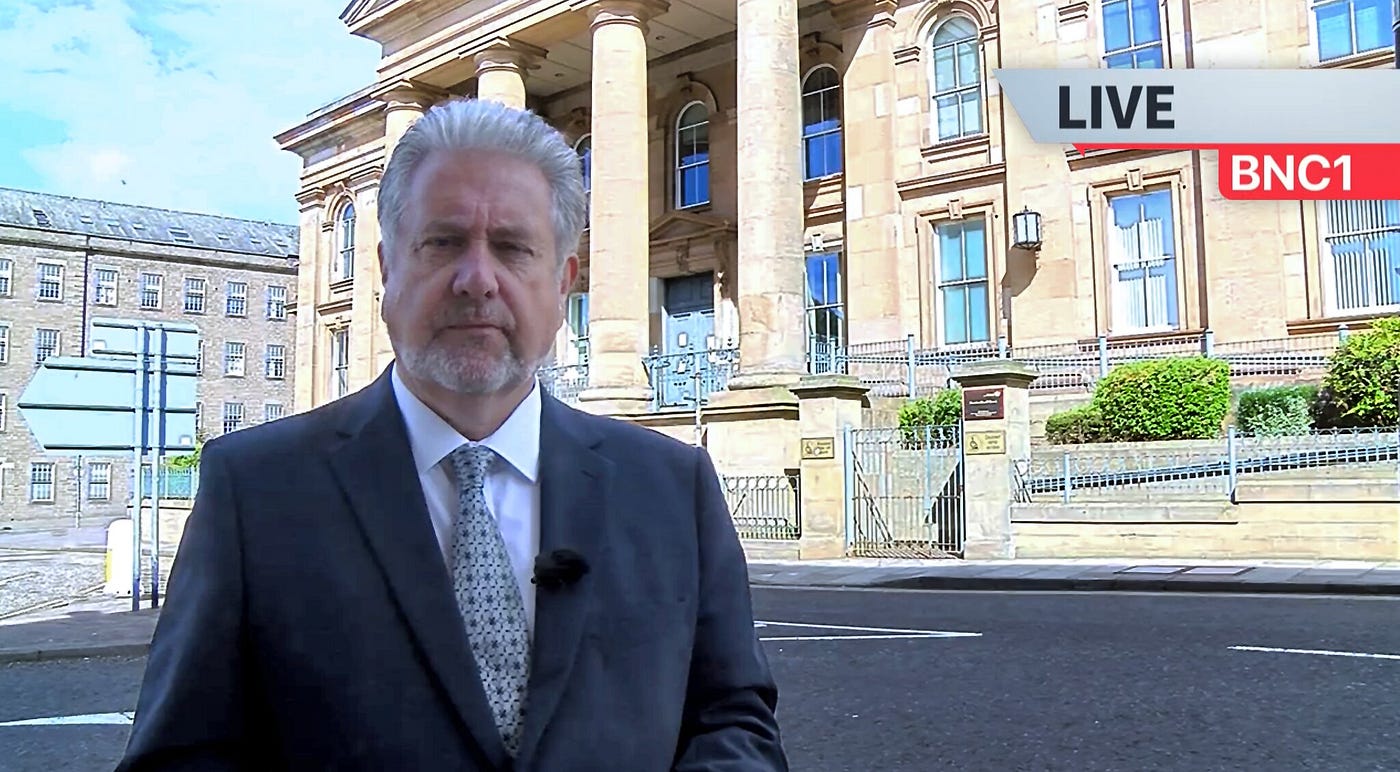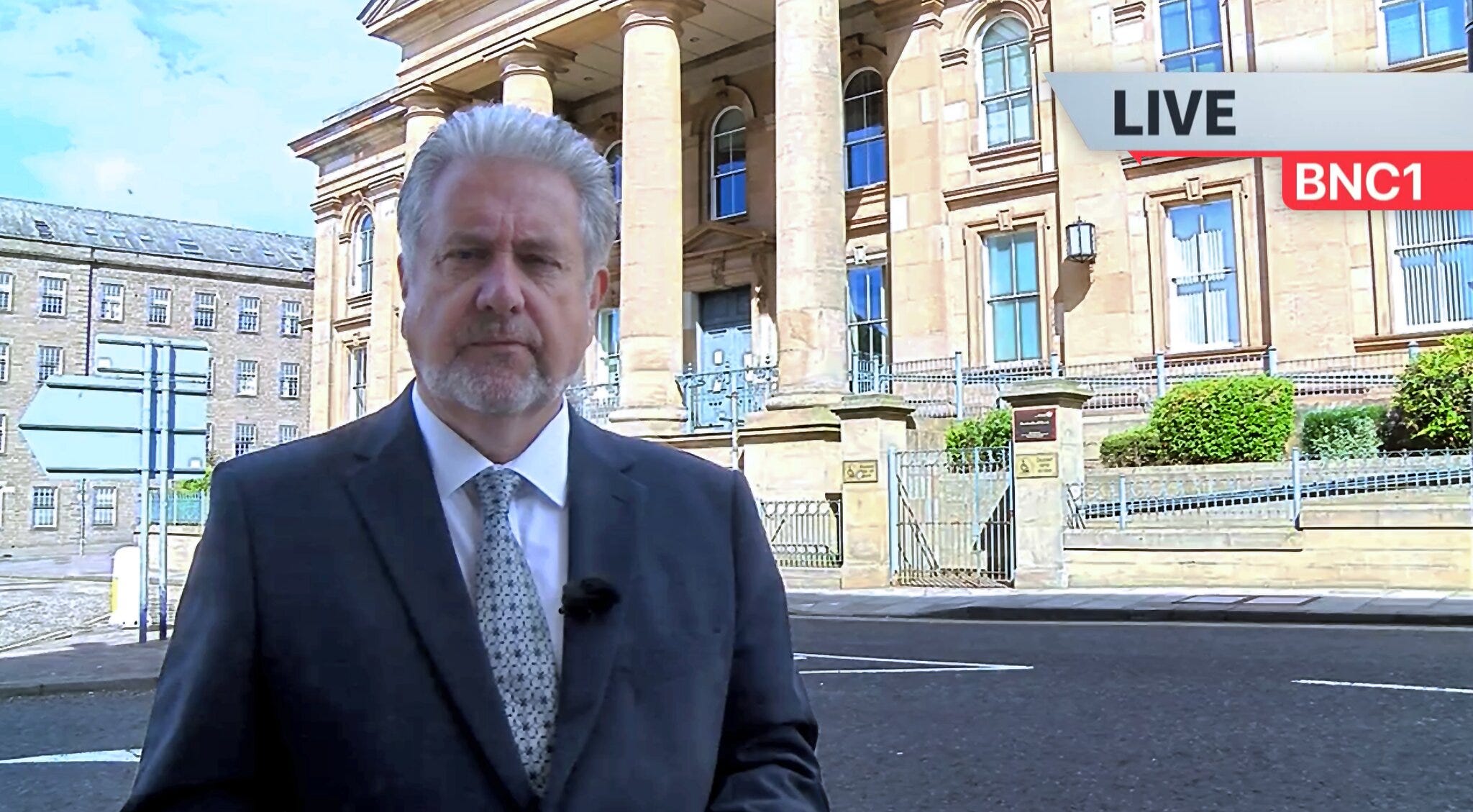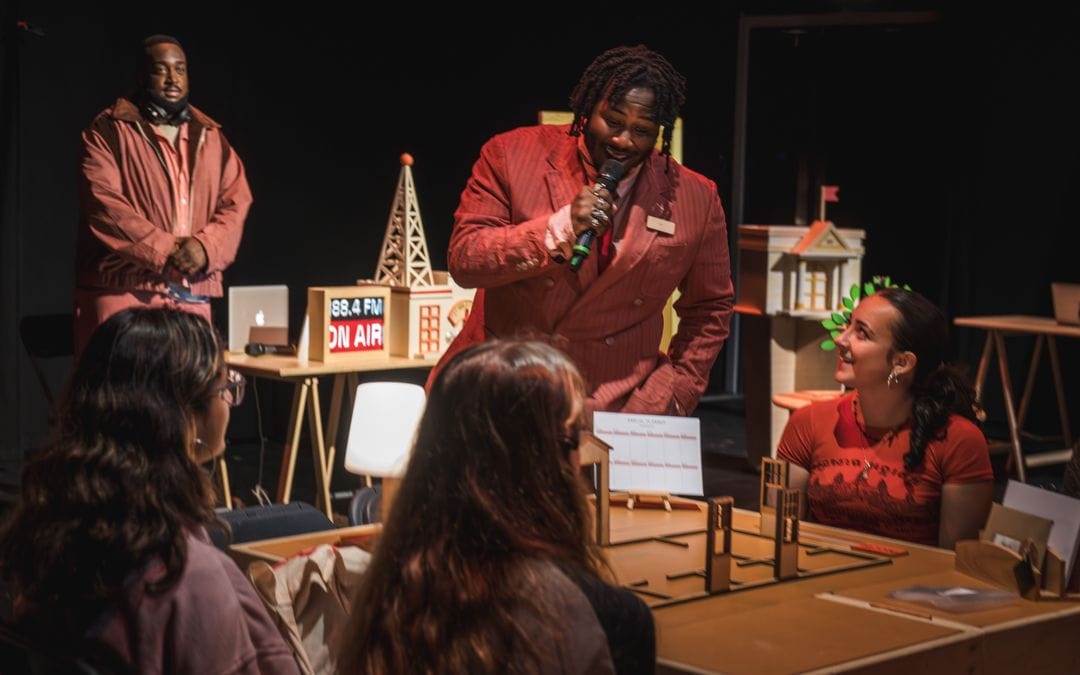
As is tradition in crime dramas of any stripe, The Evidence Chamber begins by setting the stage. We find ourselves in the coastal city of Dundee in Scotland. We are one year into the future. It is now July of 2021. The pandemic rages on, forcing all essential public services, including criminal trials, to take place online. I am assigned a new identity as Juror 10 in the case of the People vs. Andrew Davidson, who has been accused of the murder of respected human rights attorney Reeta Banerjee. The evidence against him is damning: he is a felon with a violent past and a history of burglary, his DNA was found inside the victim’s home, and his gait matches that of the only person caught entering Ms. Banerjee’s house on the night of her death. But, as is always the case with a good detective story, nothing is quite as it seems.
(Minor spoilers follow.)
For approximately three and a half hours, my fellow jurors and I hear the evidence against Mr. Davidson. We see footage of news reporters discussing the case outside the courthouse; watch interviews with forensic experts on gait analysis and DNA; and hear the varying testimonies of: Mr. Davidson, his friends, his ex-partner, and Reeta Banerjee’s former coworkers. During the evidentiary portions of the experience, we aren’t allowed to talk amongst ourselves, much like a real jury. Instead, we are given breaks at set times to discuss the case and weigh the evidence before casting a preliminary vote on Mr. Davidson’s guilt or innocence. Each voting session is impacted by the introduction of new evidence, as well as the provision of materials that provide us with alternative ways to view this evidence. Much like a real jury, our group quickly establishes cliques — some people talk a lot, some are silent the entire game, some are skeptical of the prosecution’s case from the very beginning, others more willing to listen to the voices of authority. Unlike a real jury, we do not have to come to a unanimous decision to close our case: instead, a vote of ten out of 12 jurors is enough to reach a verdict.
I find the process incredibly frustrating. We cannot pause or rewind the videos, we cannot ask questions of the experts or attorneys, we cannot ask for additional evidence, and we cannot recall any witnesses. And that’s what makes The Evidence Chamber beautiful — it works exactly like real jury duty. Fast Familiar’s team, along with expert advice from the University of Dundee’s Leverhulme Research Centre for Forensic Science, has perfectly captured the feeling of piecing together a narrative that is full of holes, relying on dry expert advice that no one on the jury fully understands and witness statements that may not be fully truthful, all while someone’s future hangs in the balance.
Oftentimes, immersive experiences which rely on high stakes fail simply because the players do not buy into the premise; they cannot forget that they are still playing a game. The Evidence Chamber avoids this by feeling incredibly real. Diagrams of the crime scene, detailed scientific evidence, and authentic-looking documents like phone records and maps of the defendant’s movements flesh out The Evidence Chamber’s story. But more importantly, the video testimonies from the defendant and the witnesses allow them to feel human. And Mr. Davidson’s humanity makes our job feel important and serious, which lends a sober air to the experience. There are no jokes, no humor during the proceedings. We almost seem to forget that this was theatre, that Andrew Davidson of Dundee, Scotland was not real. We ask tough questions of one another: At what point does a person’s capacity for violence indicate a proclivity for it? How much is an alibi from an old friend worth? Does the prosecution have to tell the whole story?
Get Cheyenne Ligon’s stories in your inbox
Join Medium for free to get updates from this writer.
SubscribeSubscribe
But the biggest questions we ask are of the scientific evidence. The Evidence Chamber pushes us to ask what credentials or method of delivery makes an expert witness feel trustworthy, whether someone’s DNA could get somewhere they claimed to have never been, and whether new forms of identity verification were trustworthy enough to stake someone’s life on it. Though my jury voted “no,” the story presented in The Evidence Chamber could have just as easily led to a “yes” verdict. When the experience ended, that feeling — that Davidson’s fate could have just as easily been decided with the flip of a coin — is what kept me thinking about it for days afterwards. With the same set of facts, another jury could have sent Andrew Davidson to prison for the rest of his life. Police procedurals and detective novels might believe that evidence is cut and dry, the story makes sense, and the “good guy” wins. The Evidence Chamber reminds us this isn’t always the case.
My one gripe with the game comes down to a feature that allows the jury to eject a juror at each phase of discussion and voting and end the experience for them. When the option was first presented, I was surprised — was I simply unaware that voting a juror off the proverbial island was an option in the United Kingdom? Or was this just a mechanic of this specific game? Though our jury never voted anyone “out” of the game, it made me nervous. I was afraid to push too hard and to ask questions that might portray me as going against the group, and thus get myself kicked out of the game.
After The Evidence Chamber concluded and we were debriefed by the Fast Familiar team, I asked why voting someone out was even an option. Rachel Briscoe, one of the lead artists, explained that the mechanism was there to prevent bullying or other inappropriate behavior from problematic jurors. While I admire Fast Familiar’s dedication to protecting the well-being of their participants, especially in a community that has struggled with the safety of both cast, crew, and participants, I think failing to explain the purpose of the ejection option potentially leads to gamification and groupthink. Naturally, when you’re playing a game — especially a game you’ve paid to play — you don’t want to go home early. I think this feature could stop players from going against the rest of the group’s opinion or lead players to vote out their opposition, so they can “win” earlier. Additionally, the presence of “Stan,” our court clerk and moderator, throughout the entire game should have made such an option unnecessary. If Fast Familiar’s team was watching the proceedings, I believe they should be responsible for removing a badly behaved participant, rather than leaving it up to the players.
But maybe that, too, holds up a mirror to a real jury. Even if you can’t be voted out of the jury box in the real world, who is brave enough to go against the group? The more distance I get from The Evidence Chamber, the more I admire its ability to capture the essence of the role played by the jury in criminal trials. The Evidence Chamber uses masterful storytelling, excellent production value, and a slick, user-friendly custom interface to create a believable and immersive environment for its players. The experience was tightly run, well-researched, and impactful. And though I don’t know if I’d call it “fun,” it was something more than that: rewarding, educational, and thought-provoking.
For those who want to know what it’s like to serve on a jury, for those that want an up-close look at trials, and for those who are skeptical of the criminal justice system, here are your summons: if you have the chance, go play The Evidence Chamber.
The Evidence Chamber has concluded.
NoPro is a labor of love made possible by our generous Patreon backers. Join them today!
In addition to the No Proscenium web site, our podcast, and our newsletters, you can find NoPro on Twitter, Facebook, YouTube, Instagram, in the Facebook community Everything Immersive, and on our Slack forum.
Office facilities provided by Thymele Arts, in Los Angeles, CA.



















Discussion